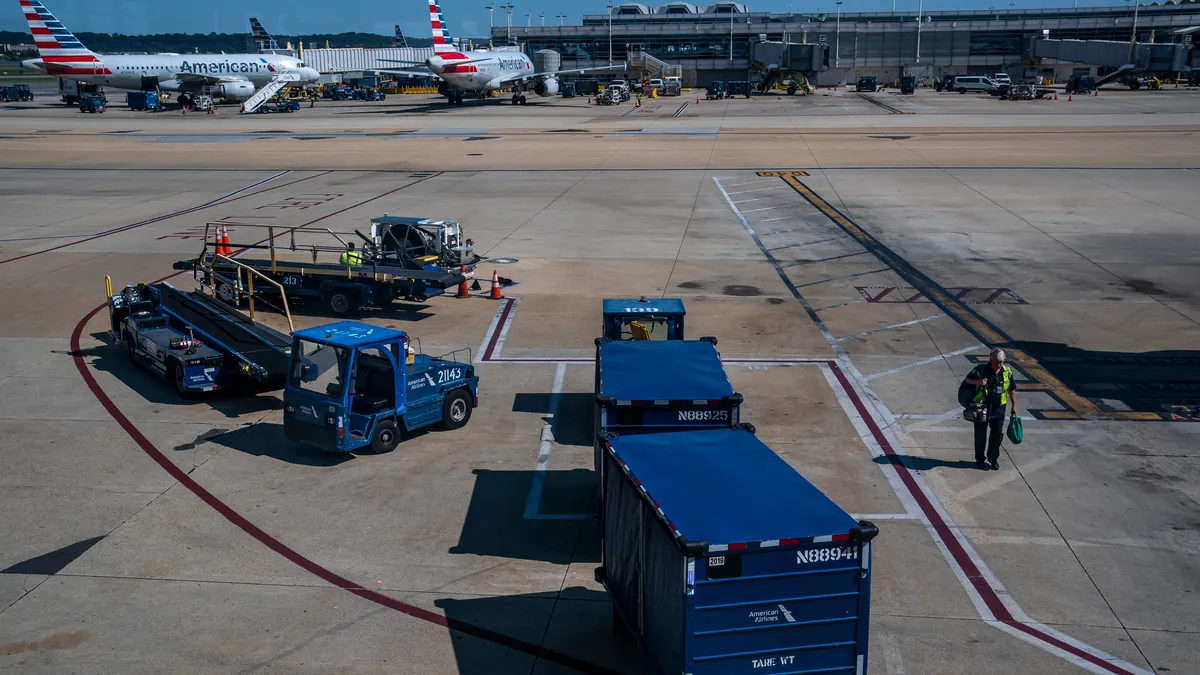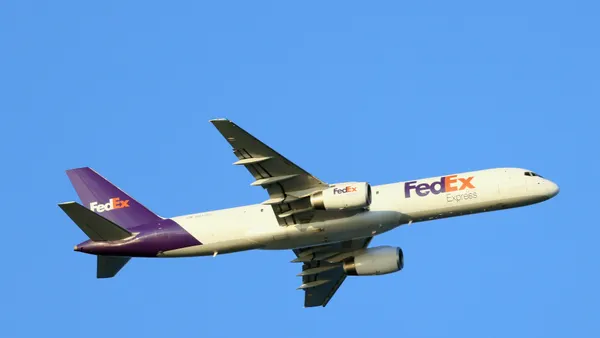Dive Brief:
- The Federal Aviation Administration has invested more than $31 million into nine infrastructure projects at U.S. airports this year to improve the efficiency of cargo operations, according to a news release last week.
- Projects funded through grants under the Airport Improvement Program include the construction of a taxiway to increase cargo apron access at Chicago Rockford International Airport and the rehabilitation of 37,400 square yards of cargo apron pavement at Bishop International Airport in Flint, Michigan.
- "The projects at these airports will help expedite the movement of goods throughout the country," according to the FAA release.
Airport projects funded through the FAA's Airport Improvement Program this year
| Airport | City | Grant amount | Purpose |
|---|---|---|---|
| Ted Stevens Anchorage International Airport | Anchorage, Alaska | $8.2 million | Reconstruct the taxilane and rehabilitate the apron. |
| Chicago Rockford International Airport | Rockford, Illinois | $6.8 million | Construct a 4,267-foot taxiway and connectors to increase access to the south cargo apron. |
| Huntsville International Airport | Huntsville, Alabama | $5.6 million | Rehabilitate 5,600 square yards of the existing air cargo apron and expand the airport's existing access road. |
| Greenville-Spartanburg International Airport | Greer, South Carolina | $4.5 million | Rehabilitate existing taxiway and cargo apron pavement throughout the airport. |
| Bishop International Airport | Flint, Michigan | $2.3 million | Rehabilitate existing cargo apron pavement and perform crack repair and joint sealing to deicing apron surface. |
| Seattle-Tacoma International Airport | Seattle, Washington | $1.9 million | Reconstruct 4,200 square yards of existing cargo apron pavement. |
| Eugene F. Kranz Toledo Express Airport | Swanton, Ohio | $1.1 million | Rehabilitate cargo apron pavement and design improvements to the taxiway safety area erosion control system. |
| Stockton Metropolitan Airport | Stockton, California | $417,036 | Fund the design phase to rehabilitate 800 feet of the existing cargo taxilane pavement. |
| Rhode Island T.F. Green International Airport | Warwick, Rhode Island | $197,310 | Design a new 60,000-square-yard cargo apron to accommodate increased use. |
Source: FAA news release
Dive Insight:
Oftentimes, cargo operations occur in an area of the airport not occupied by passenger airlines. This means they have their own needs in terms of funding, including investments in the cargo apron area where loading and sorting occurs, said Gina Zuckerman, vice president of legislative policy at the Cargo Airline Association, in an interview.
The value of the transportation mode became more clear to the federal government and airports after cargo demand jumped while passenger travel declined during the pandemic. Frequent supply chain hurdles and port congestion caused more shippers to flock to air transportation in 2021, despite the steep price they had to pay for limited capacity.
"I think the recognition that those are areas worth investing in, considering the increase in cargo operations that we've seen, especially over the last couple of years, is worthwhile," Zuckerman said.
Although demand for the speedy transport mode has cooled in recent months, more robust airport infrastructure will help airlines keep their ground operations moving smoothly when interest jumps in the future. In November 2021, congestion at airport ground handling facilities — much of it driven by labor constraints — clogged cargo activity while companies were stocking up for peak season.
"We're seeing [demand] back to 2019-ish levels, but I think people's habits have changed," Zuckerman said. "I don't think the e-commerce numbers are going to plummet by any means. I think just generally, if someone's shipping something by air, there's a reason why they're doing that."













